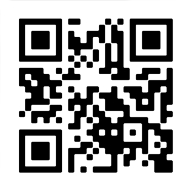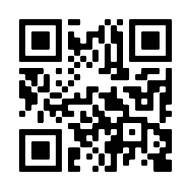Southwestern U.S. Dialects: A Blend of Cultures & Languages
From Texas deserts to New Mexico mountains and Arizona canyons, the Southwestern United States is as culturally rich as it is geographically diverse—and so are its dialects. In this post, part of our ongoing U.S. Regional Dialects series, we’ll explore how the Southwest’s unique blend of Indigenous, Spanish, and American English influences creates a vibrant linguistic identity.
Whether you’re traveling through El Paso or studying in Santa Fe, understanding Southwestern dialects can improve your listening skills and deepen your appreciation for American English.
The Southwestern Sound: Where Cultures Collide
Unlike other U.S. regions with a dominant linguistic tradition, the Southwest is a cultural crossroads. Native American languages, Mexican Spanish, and English have all played major roles in shaping how people speak here. The result is a distinctive dialect marked by bilingualism, borrowed vocabulary, and regional expressions rooted in tradition.
Key states in this region include:
- Texas (Western and Southern areas)
- New Mexico
- Arizona
- Parts of Oklahoma, Colorado, Nevada, & Southern California

Defining Features of Southwestern Dialects
Pronunciation
- Spanglish Influence: English is often spoken with Spanish-influenced intonation, especially in bilingual communities.
- Spanish words often retain their original pronunciation: such as jalapeño (hah-lah-PEH-nyo) or quesadilla (keh-sah-DEE-yah).
- Spanish-influenced stress patterns: In some Southwestern speech influenced by Spanish, syllable stress can differ from General American English.
- For example, Spanish tends to favor more regular stress on the second-to-last (penultimate) syllable. This sometimes affects how bilingual speakers pronounce English words.
- Example: inSURance instead of INsurance (Though both may be heard, especially in Texas and New Mexico.)
- Glottal stops and dropped endings: In rural areas, words like “button” may be pronounced without the “t.”
Grammar
- Code-switching: Seamless switching between English and Spanish is common in conversation. Common in bilingual areas like El Paso, Tucson, and Albuquerque.
- Example: “I’ll see you after la clase.”
- Double subjects: “My sister, she’s coming later” — a structure often found in Spanish-influenced English.
- Double negatives: Use of “ain’t” or double negatives is sometimes heard in informal settings.
- “She ain’t never been to New Mexico before.”
- (Translation: She has never been to New Mexico before.)
- Use of “anymore” in positive statements: A lesser-known regionalism present in parts of the Southwest.
- Example: “I go there a lot anymore.” (Used like “nowadays”)
Vocabulary
Like plenty of other foreign language loanwords found in English, many Spanish terms have been fully integrated into Southwestern English:
- Barrio – neighborhood
- Plaza – town square
- Mesa – flat-topped hill
- Acequia – irrigation ditch
- Chili/chile – hot pepper (New Mexico has a statewide obsession!)
- Coyote – A small wild canine, pronounced “kai-OH-tee” in this region
- Chimichanga – A deep-fried burrito
Regional Slang & Idiomatic Expressions in the Southwest
The Southwestern U.S. is known not only for its unique blend of English, Spanish, and Native languages, but also for colorful expressions and slang that reflect its history, geography, and culture. Here are some common sayings and idioms you might hear in Texas, New Mexico, Arizona, and surrounding areas:
🐂 Texas Talk & Ranching Slang
- “All hat, no cattle” – Someone who talks big but lacks substance.
- Example: “He acts like a CEO, but he’s all hat and no cattle.”
- This idiom comes from cowboy culture—someone might look the part (big hat), but they don’t actually own or run any cattle (i.e., no real substance). It’s a fun way to call someone out for bluffing.
- “Rarin’ to go” – Ready and eager.
- Example: “We’ve packed the truck and we’re rarin’ to go!”
- Short for “raring,” this phrase is common in Southern and Southwestern English. It’s often used to show eagerness, especially before a trip or event.
- “Fixins” – Side dishes or trimmings, especially at a barbecue.
- Example: “Grab a plate—there’s brisket and all the fixins.”
- You’ll hear this at cookouts across Texas and the South. “Fixins” refers to everything that goes with the main dish—beans, cornbread, slaw, and more.
- “You’re in high cotton” – Doing very well or thriving.
- Example: “Ever since she landed that new job, she’s been in high cotton—bought a new car and everything!”
- This phrase has Southern agricultural roots, referring to a time when cotton was tall and plentiful—a sign of a good harvest.
- “Get down” – Common in Texas to mean “get out of a car.”
- Example: “We’re here! You gonna get down and say hi to your grandma?”
- This is very common in Texas and can be surprising for newcomers or ESL learners who might think it means “to boogie.”
- “Y’all come back now, ya hear!” – Friendly goodbye phrase still heard in Texas and nearby areas.
- “Got a hitch in your giddy-up” – Moving slowly or with a limp.
- Example: “You alright? Looks like you’ve got a hitch in your giddy-up.”
- A lighthearted way to say someone’s walking funny, limping, or not moving quite right. Comes from cowboy lingo—“giddy-up” means “go!”
🌶️ New Mexico Expressions
- “Christmas style” – Ordering both red and green chile on a dish.
- Example: “You want red or green?” / “I’ll take Christmas!”
- In New Mexico, chile is serious business. Restaurants serve red or green chile sauce—or both, which locals call “Christmas.” ESL students in the region will definitely encounter this phrase.
- “Land of Enchantment” – Nickname for New Mexico, used with pride.
- Example: “No place like the Land of Enchantment for sunsets.”
- It’s the official state nickname and shows up in everyday conversation, tourism slogans, and local pride.
- “Burqueño” – A person from Albuquerque.
- Example: “He’s a true Burqueño—grew up near the Sandias.”
- Locally coined term from Burque, a nickname for Albuquerque. Often used by locals with pride., and the Sandias are a mountain range in New Mexico.
🌵 Desert Dialect: Arizona & West Texas
- “Snowbird” – A person (often retired) who migrates south for the winter.
- Example: “The RV park fills up with snowbirds by November.”
- Common term in Arizona and parts of Texas. Refers to retirees or travelers who “migrate” south to avoid cold northern winters.
- “Hotter than a two-dollar pistol” – Extremely hot outside.
- Example: “It’s 110 degrees—hotter than a two-dollar pistol today!”
- A colorful simile found in rural and cowboy speech. It means “very hot,” with a bit of Southern flair and humor. The phrase originated from the 1800s, referring to cheap, poorly made pistols that became dangerously hot when fired. It’s not about the price of the pistol, but rather the intense heat it generated due to its poor quality.
- “Dry as a bone” – Very dry, often describing the weather.
- Example: “Haven’t seen rain in weeks—it’s dry as a bone.”
- Used to describe arid weather (hello, desert Southwest!) or even dry skin or landscape. Very visual and easy for learners to grasp.
🇺🇸🇲🇽 Bilingual & Spanish-Influenced Slang
- “Órale” – A Mexican Spanish exclamation meaning “Right on!” or “Let’s go!”
- Example: “We’re late—órale!”
- A flexible interjection used widely in Mexican Spanish and among bilingual speakers in the Southwest. Shows enthusiasm or urgency.
- “No pasa nada” – “No worries” or “It’s all good.”
- Example: “Sorry I forgot.” / “No pasa nada!”
- A calming phrase used frequently in casual Spanish, often heard in bilingual or Spanglish conversations. It puts people at ease.
- “Qué padre” – Slang for “How cool” (from Mexican Spanish, used by younger speakers).
- Example: “You got concert tickets? ¡Qué padre!”
- Heard mostly among younger Spanish speakers. “Padre” literally means “father,” but in this context it means “awesome” or “cool.”
These expressions reflect the casual, friendly, and culturally rich nature of Southwestern English. ESL students may not find them in textbooks, but they’re part of everyday conversation—and understanding them can make communication feel much more natural. Check out our blog on 21 Common English Idioms to learn more.

Regional Highlights in Southwestern Dialects
The Southwest isn’t homogenous; accents and phrases vary depending on the state and community. For example:
NEW MEXICO ENGLISH
- Heavy Spanish and Native American influence
- Unique terms like “arroyo” (dry creek) and “molino” (mill)
- New Mexican English often includes rhythm and cadence from Spanish speech
WEST TEXAS DIALECT
- Draws from Southern English, but with Southwestern flair
- Use of both “y’all” and Spanish terms is common
- Speech is often slower-paced and more deliberate
ARIZONA ENGLISH
- A heavier presence of Native American terms like Kiva (a ceremonial chamber)
- Near the border, you’ll hear a mix of English and Spanish
- Northern Arizona may reflect more of a Western U.S. influence, while the south leans bilingual
- Common expressions: “It’s a dry heat,” and “snowbird” (winter visitor)
Cultural Influences on Southwestern Dialects
The Southwestern United States is one of the most culturally layered regions in the country, and that complexity is reflected in the way people speak. Dialects here are not just regional—they’re cultural artifacts shaped by centuries of interaction between Indigenous communities, Spanish colonizers, Mexican heritage, and American settlers.
What makes Southwestern English stand out is how these different influences are not just historical—they’re alive and active in everyday language.
Spanish Heritage
The Southwest was once part of Spain’s colonial empire, and later Mexico, which left a lasting impact on the region’s language, place names, and culture.
Today, many communities are bilingual or predominantly Spanish-speaking, and the influence is evident in:
- Everyday speech patterns – from intonation to rhythm
- Frequent Spanish loanwords like plaza, canyon, patio, ranch, fiesta, mesa, and rodeo
- Place names like El Paso, Las Cruces, Santa Fe, and San Antonio
- Chilango slang and Spanglish phrases often used among younger speakers or in casual conversation
For ESL students, recognizing this influence helps explain why certain words or pronunciations feel “different” from textbook English—and why that’s okay!
Indigenous Languages & Identity
Native American tribes such as the Navajo, Apache, Hopi, Pueblo, and many others have lived in this region for thousands of years. While not widely spoken by the general population, their languages and cultural patterns still influence local English through:
- Place names like Taos, Chaco, Tucson, Zuni, Tonto, and Kokopelli
- Loanwords like hogan, kiva, totem, coyote, pueblo, and moccasin
- Narrative rhythms and emphasis patterns rooted in oral storytelling traditions
These subtle influences enrich Southwestern English and contribute to its sense of identity and rootedness in the land.
Cowboy & Frontier Culture
From classic Westerns to real-life ranching towns, cowboy culture is deeply tied to the region’s dialect. Ranching life shaped not only the vocabulary but also the laid-back, rugged tone of Southwestern English.
Common features:
- Expressions like “all hat, no cattle”, “fixins”, or “giddy-up”
- Terms rooted in agriculture and land use: range, trailhead, wrangler, livestock
- The use of y’all, ain’t, and double negatives in casual speech
This cultural layer adds authenticity and pride to how people speak—and it shows up prominently in pop culture.
Modern Multiculturalism
Today, the Southwest is a crossroads of global migration—home to immigrant communities from Latin America, Asia, the Middle East, and Africa. This diversity continues to shape language through:
- New slang and borrowed expressions entering local speech
- Accents and pronunciation patterns influenced by native languages
- Hybrid identity terms like Tex-Mex, Chicanx, or Burqueño
The result is a constantly evolving dialect that reflects modern inclusion and diversity while staying rooted in regional identity.

Pop Culture & Media Influence in the Southwest
The language of the Southwest has not only been shaped by local culture—it’s also been broadcast to the world through movies, TV shows, music, and digital media. This exposure has amplified certain phrases, accents, and stereotypes that ESL students are likely to encounter.
Hollywood’s Western Legacy
The Southwest is the traditional setting for countless Western films, which helped romanticize and globalize its dialect:
- Movies like True Grit, No Country for Old Men, andThe Good, the Bad, and the Ugly popularized the “cowboy drawl.”
- Characters often use expressions like reckon, howdy, y’all, and ain’t.
- These films helped stereotype the Southwestern dialect as rugged, slow, and folksy—sometimes true, sometimes exaggerated.
While many Westerns were filmed in Arizona, Texas, and New Mexico, the language they portray became a global image of American frontier speech.
TV & Streaming Shows Set in the Southwest
More recent shows present a modern twist on Southwestern life and language, exposing ESL learners to more authentic, diverse, and bilingual characters:
- Breaking Bad and Better Call Saul (Albuquerque, NM): Include bilingual dialogue, local slang, and New Mexico’s speech patterns.
- Reservation Dogs (Oklahoma): Highlights Native American communities, Indigenous humor, and rural dialects.
- Walker, Texas Ranger (Texas): A mix of Southern and Southwestern slang used in heroic, lawman characters.
- The Bridge (El Paso–Juárez): Focuses on border culture, code-switching, and Spanglish.
These shows are great listening practice and cultural context for ESL students.
Southwestern Slang on Social Media & Music
Modern influencers, rappers, and TikTok creators from places like El Paso, Phoenix, and Albuquerque continue to spread local slang online:
- Spanglish expressions are common: “I’m vibing, pero like… tired.”
- Youth slang like “low-key”, “I’m dead” (meaning something’s funny), or “bet” (meaning “okay” or “deal”) is often layered with regional speech.
- Artists like Khalid (from El Paso) and Native rappers like Supaman showcase regional identity in their lyrics and speech patterns.
Pop culture reflects how dialects evolve in real time—and ESL students benefit from being tuned in.
Why Understanding Regional Dialects Matters for ESL Students
Understanding the Southwestern dialect can help learners:
- Grasp regional slang and expressions
- Understand bilingual conversations or Spanglish
- Recognize cultural references in speech and media
- Connect more easily with native speakers from this region
At Excel English Institute, we help students build confidence in real-world English—from pronunciation and vocabulary to cultural fluency. Learning how people truly speak across the U.S. will take your English to the next level.
Explore our ESL programs and start learning with us today!
Excel English Institute’s U.S. Dialects Guide for ESL Learners
Below is a list of the dialects we will be exploring in this series. Links will be added as they are published, so check back for updates!
- Discovering U.S. Dialects: A Guide for ESL Learners
- Midwestern Dialect: The Heart of Neutral American English
- Southern Dialects: The Warm & Melodic Voices of The South
- Northeastern Dialects: The Voice of America’s Historical Heart
- Western Dialects: The Language of The Open Frontier
- Southwestern Dialects: A Blend of Cultures & Languages
- Appalachian Dialect: Preserving The Language of The Mountains
- Hawaiian Pidgin: The Unique Voice of The Aloha State
- African American Vernacular English (AAVE): A Rich & Influential Dialect













